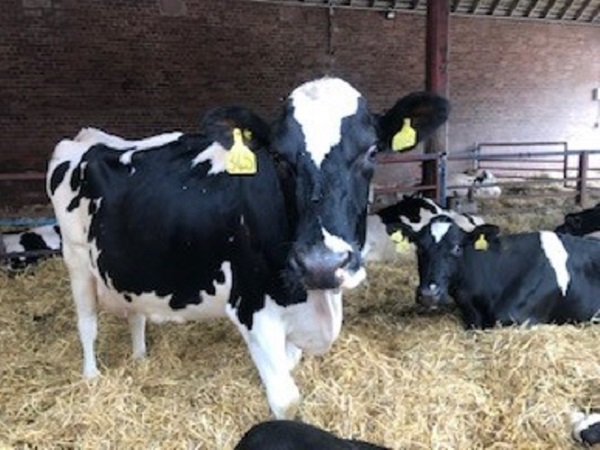The Many Factors Influencing Milk Quality
4 February 2021Improvements in milk quality can make a big difference to the monthly milk cheque and at SRUC’s three dairy herds, which are on Arla manufacturing contracts, raising the butterfat by 0.2% and protein by 0.1% is worth just over an extra 1p/litre of milk. For a 150-milking cow herd averaging 28 litres, that is an additional £1,260/month.
Changes to milk quality can also provide nutritional indicators; is there sufficient forage (NDF) in the ration to support butterfats? If milk protein is low, it could indicate an energy deficiency, with cows having lost significant body condition. In some instances, protein supply may be inadequate or methionine could be lacking. Maximising dry matter (and hence energy intake) is important for milk protein, as is the starch content.
Although nutrition and feeding management play a role, the excellent milk quality seen at SRUC’s dairy herds is also put down to genetics, cow comfort and forage quality. The three herds are milked twice a day at 12-hour intervals and their latest milk recording figures from January are shown below. Milk yields and composition have been very similar over the past four months.
| Farm | Current rolling 12 month average yield (kg) | Average dairy yield (kg) | Average butterfat (kg) | Average protein (kg) | Average days in milk |
|---|---|---|---|---|---|
| Crichton Royal | 10467 | 31.98 | 4.40 | 3.41 | 161 |
| Acrehead | 10364 | 28.75 | 5.02 | 3.73 | 186 |
| Barony | 10183 | 33.07 | 4.44 | 4.23 | 147 |
Note data from Crichton Royal Farm is based on the average of all four recorded herds which are split according to genetic merit (Select and Control) and feeding system (High Energy and Standard Energy).
Genetics can significantly impact on milk quality over time. At Crichton, half the herd is within the top 5% UK breed average, with these cows yielding on average 878kg more per lactation than the cows of average genetic merit, yet their butterfat and protein levels are 0.44% and 0.23% higher respectively. Protein and fat percentage in milk is highly heritable (around 50-60%) and so breeding, whilst a long-term strategy, can make significant improvements in quality without compromising on yield.
Cow comfort and lying time are also hugely important, with an extra hour lying time equating to an extra kg of milk. Cows should ideally lie for 12+ hours a day and so cubicles must be appropriately sized with a comfortable lying surface. Keeping time away from cubicles for milking and other management activities to a minimum will help milking performance as well as take pressure off the feet, reducing the risk of lameness. New mattresses at SRUC’s dairy herds have increased herd average lying time by around 1.5 to 2 hours/day (as recorded by the CowAlert System from IceRobotics Ltd.).
Although multi-cut silage systems do not suit every farm, a five-cut system at Crichton and Acrehead has helped improved forage quality and forage intakes, with silages often analysing around 12ME and between 14 to 16% protein. When feeding high dry matter forages, reducing sorting behaviour through the addition of molasses, whey permeate or water will benefit milk production, with higher butterfats often reported. A number of other nutritional factors will impact on milk quality, some of which are listed in the following table:
| Nutrition and management factors affecting butterfat % | Nutrition and management factors affecting protein % |
|---|---|
| Low forage intakes in relation to concentrates | Low starch content in diet |
| Low NDF in ration (<20% of NDF from forage) | Energy deficit (and significant body condition loss in early lactation) |
| High starch/sugar diets (in conjunction with insufficient fibre) | Methionine deficiency |
| High intakes of fresh grass | Diet deficient in metabolisable protein |
| Use of C16 palmitic fat can boost butterfat % | Low sugar content in diet |
| Slug feeding (high concentrate feeds in parlour) | Inadequate protein in dry cow diet |
| Ration sorting (TMR too dry at >45% dry matter) | Avoid high fat diets (>5%) |
| Insufficient feed space and low dry matter intake | Deficiency in bypass protein |
| Feeding mixed forages (can increase overall intake and improve butterfat) | Insufficient feed space and low dry matter intake |
| Poor forage quality | Low body condition score of cows at calving |
| Poor body condition | Feeding mixed forages (can increase overall intake and improve milk protein) |
| Poor forage quality |
Lorna MacPherson for the Farm Advisory Service
Sign up to the FAS newsletter
Receive updates on news, events and publications from Scotland’s Farm Advisory Service

